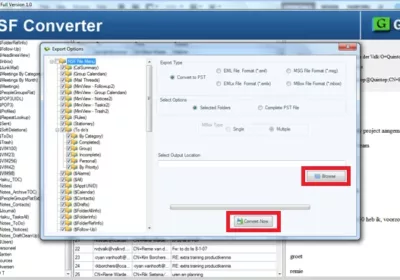
The Rising Threat Landscape: Why Zero Trust Network Access is Essential
Zero Trust encompasses many different tools to protect against cyber threats. These include software-defined perimeter tools, microsegmentation technologies, and identity-aware proxies.
Its core premise is “never trust, always verify.” This security model treats users, devices, and applications as hostile until they are validated and monitored for their identity, context, and security posture.
Authentication
In a Zero Trust approach, each user’s identity is verified and validated to determine their security posture before accessing core assets. This includes user authentication, device health verification, app validation and continuous monitoring to detect anomalous behavior. This verification process reduces the likelihood of a damaging data breach by preventing attackers from gaining unrestricted access to critical assets within the organization.
In addition to this continuous verification, the principle of least privilege is implemented. This ensures that any account, including service accounts, is given the minimum connection privilege necessary to perform its function. This is especially important as attacks often leverage overly permissioned service accounts to gain lateral movement and bypass detection systems.
Another way to limit the opportunity for a successful attack is to encrypt all traffic within a Zero Trust network. This renders the network invisible to the external internet, reducing the threat surface and making it harder for attackers to exploit vulnerabilities. Combining a highly secured perimeter and using Zero Trust networking tools like network segmentation and access control minimizes an organization’s exposure to digital threats.
However, some organizations find that implementing Zero Trust takes time and effort. This can make achieving a rapid and complete rollout of the technology challenging. Working with a security partner specializing in Zero Trust Network Access is the best to overcome these challenges. This can help streamline the implementation and management of the resolution, saving organizations money over time.
Access Control
Zero Trust solutions provide granular access control for users, devices, and applications to protect against malicious attacks. They implement the security principles of “never trust, always verify” and use micro-segmentation, encryption, and rich intelligence to assess a user’s network status and posture. This reduces the risk of data breaches, lateral movement, and other cyber threats.
The ability to monitor activity at a granular level helps prevent breaches caused by malicious insiders, stolen credentials, or man-in-the-middle (MitM) attacks. For instance, if a janitor used stolen passwords to access the credit card numbers database, an effective Zero Trust system would detect this activity and immediately alert the appropriate personnel.
In addition to protecting against cyber threats, Zero Trust provides a secure foundation for business operations. It simplifies how remote workers connect to core resources, reducing time spent on administrative tasks, improving the end-user experience, and lowering IT support costs. A recent study found that long-term security costs fall by 31 percent with an effective Zero Trust solution.
Zero Trust can also improve your company’s ability to quickly and securely add new assets. This enables teams to reshape how they manage their networks, enabling workloads to move rapidly from private to Cloud or hybrid environments with minimal changes to security policies. This is important because most companies operate outside of traditional network boundaries.
Network Segmentation
While running a flat network to reduce the number of switches may save time and money, it leaves your business or organization vulnerable to attacks. It allows threat actors to move through the network to access critical data and systems, making it an easy target. A cyberattack can wreak havoc on an entire organization; the damage is difficult to contain if it succeeds.
With Zero Trust network access, you can implement a defense-in-depth strategy that includes strong segmentation and security tools to prevent attackers from moving from system to system within your business or organization. Segmentation separates your business or organization into smaller networks, enabling each network to have its security policies and controls.
Whether you use physical or virtual segmentation to divide your network, it offers better protection from attack surfaces and reduces the risk of damaging account breaches. This is because if one segment is breached, the threat actor will be confined to that network area and unable to pivot or move laterally throughout the rest of your business or organization.
To implement a network segmentation strategy, you must know what assets are in each segment and what data they contain. This will help you define the right level of protection for each piece. It’s also important to apply the “least privilege” principle for any credentials that have access to your network, including those that don’t belong to human users (such as service accounts).
Monitoring
With the rise of remote work and innovations that make the traditional network perimeter obsolete, Zero Trust has emerged as a key security framework for the digital transformation most enterprises require. It focuses on the idea of never trusting, always verifying and limiting the “blast radius” after an attack is committed to determine the impact of a breach.
This involves ensuring every user, device and application is authenticated, authorized, encrypted and continuously verified for configuration, posture, health and compliance. This requires a combination of advanced technologies like risk-based multi-factor authentication, identity protection, next-generation endpoint and cloud workload technology to verify a device’s state at that moment in time to ensure the correct security posture.
It also means limiting the privileges granted to each device, user or application to the minimum required to complete the task. This involves a combination of identity-driven access control, micro-segmentation and the principle of least privilege to prevent an attacker from moving laterally across the network, even if they are not initially authenticated.
Finally, it requires a continuous monitoring and response mechanism for all activity to detect and alert security operations centers to anomalies in real time. This includes the detection of malicious activity, stolen credentials and compromised accounts. It also requires a combination of machine learning and behavioral analysis to identify patterns that can signal potential attacks.
















